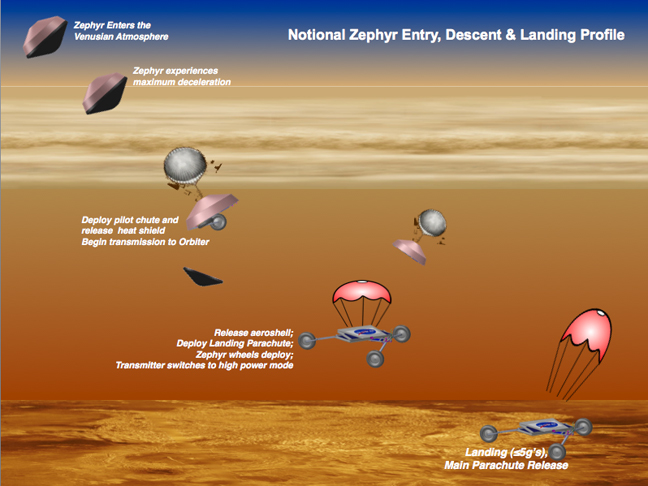Zephyr - NASA sail rover for exploring Venus

Venus is called the twin of the Earth because of its comparable size and mass. However, the planet is shrouded in a thick layer of clouds of sulfuric acid, which makes it impossible to study it optically. In addition, the surface temperature is very high due to its proximity to the sun. Therefore, the study of Venus is quite difficult.
Geoffrey Landis is researching the subject at the NASA Cleveland Research Center. Together with the COMPASS laboratory (Collaborative Modeling for Parametric Assessment of Space Systems), he is developing a new type of apparatus - the Zephyr rover, which is supposed to be able to use strong winds in the atmosphere to study the surface of Venus. The device will be able to move around the planet and withstand temperatures up to 450 degrees Celsius.

The process of descent and landing "Zephyr".
The atmosphere of Venus is clear of dense clouds at an altitude of up to 30 km. And the surface is a very flat rocky area without major irregularities. Marshmallows should spend most of the time on the surface, studying it, but if it is necessary to move, a special sail will unfold, which can set the rover in motion.
The design of the apparatus is unusual and consists of only two moving parts - the mechanisms for raising the sail and controlling it; these processes will not require a large expenditure of energy. The rover will be powered by solar panels with a total area of 12 square meters. This will be enough for 15 minutes of movement daily.
If the mission is launched, then a spaceship will land on Venus for the first time since 1980, when the Soviet Union sent vehicles to study the planetas part of his program . The Zephyr project currently exists as a concept in Innovative Advanced Concepts. In the future, NASA scientists plan to work on other concepts of research devices with low energy consumption.
via NASA and UniverseToday
